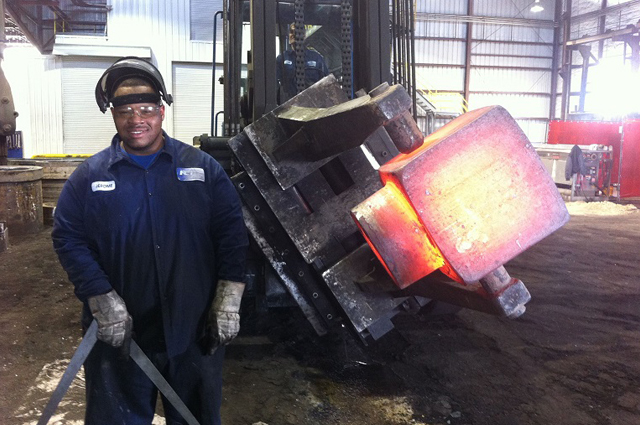
A Brief History of Carbon Steel – Part 2
For more info on this topic, check out last month’s post A Brief History of Carbon Steel – Part 1
Carbon steel wasn’t always the reliable metal that we use for our blind flanges and forged steel rings that we use today. In the centuries since 500 AD, the methods of producing carbon steel stayed much the same. Blast furnaces were used to create cast-iron–iron with 3% to 5% carbon content–first by the Chinese around the 6th Century BC and then in Europe throughout the Middle Ages. Metalsmiths came to understand that the higher carbon content was the cause of brittleness within the steel. They experimented in various ways to lessen the amount of carbon present in the metal, with little success until the invention of the pudding furnace in 1784.
Pudding furnaces were large furnaces for melting iron that involved the stirring of the molten iron with long oar-like tools named “pudders.” This allowed oxygen to enter the process, combine with the carbon and releasing it as carbon-dioxide. As the carbon was released, the melting point of the iron in the mix increased, so the iron would cluster together and would be removed from the furnace and worked by metalsmiths. The problem was that pudding furnaces required a lot of fuel to run and were very labor intensive.
Other methods were developed during this time, but all of them suffered from the same problems of high fuel needs and extensive labor to produce. It wasn’t until Henry Bessemer came up with the Bessemer process in 1856 that there were any dynamic improvements in the steel making process.
Henry Bessemer was a prolific English inventor who had over 125 patents–mostly in the production of glass, iron and steel industries–to his name, but his most famous invention was the process that bears his name.
The Bessemer process uses a pear-shaped vessel to blow oxygen through pig iron to combine with excess carbon, and remove it from the molten iron. This process led to faster and cheaper steel production for a world hungry for steel for its railroads, bridges, and weapons.
This is the end of the second part of a Brief History of Carbon Steel. Tune in next month for part 3.
Turn to Forged Components, Inc. for your Carbon Steel ASME flanges
Forged Components uses carbon steel for products such as ANSI flanges, forged steel rings, and other industrial flanges. Contact us for your carbon steel flange manufacturing needs via our Contacts page or call us at (281) 441-4088.
